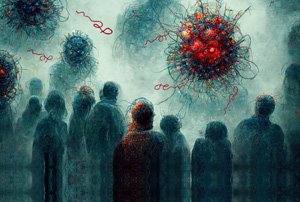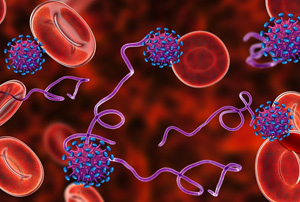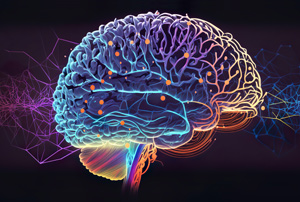Symptom Patterns in Six Lyme-Related Infections In "New Paradigms in Lyme Disease Treatment" 10 Top Doctors Reveal Healing Strategies
Mycoplasma Symptom Patterns
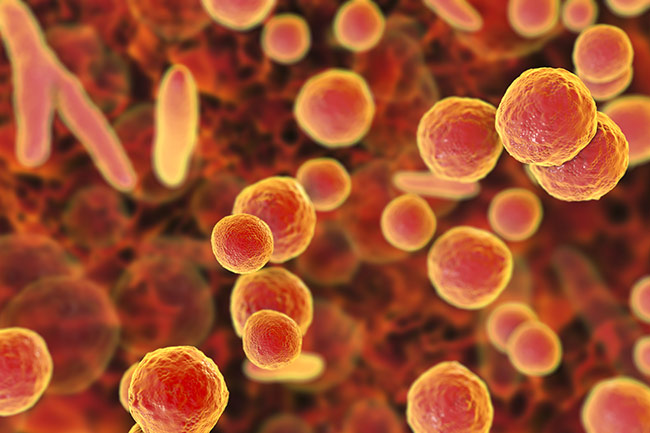 Mycoplasma is an interesting organism that is also found in nearly everyone with Lyme disease. It’s very small, like a virus, and some researchers believe that it is really a cross between a virus and bacteria. It can accumulate on the endothelial lining (which is comprised of cells that line the blood and lymphatic vessels) and cause inflammation and pain.
Mycoplasma is an interesting organism that is also found in nearly everyone with Lyme disease. It’s very small, like a virus, and some researchers believe that it is really a cross between a virus and bacteria. It can accumulate on the endothelial lining (which is comprised of cells that line the blood and lymphatic vessels) and cause inflammation and pain.
Some German researchers believe that Mycoplasma exists in everyone in a benign form, and that it’s one of trillions of bacteria that colonize the body.
This means that people with dominant Mycoplasma infections can get migraine headaches because the infections irritate the vascular system in the brain. Or, people might have inflammatory gut or lung issues because the microbes are active on the endothelial lining of the gut and lungs. They can also be prominent in the bladder. Interstitial cystitis, or bladder inflammation, is caused more often by Mycoplasma, but can also be caused by Bartonella.
Mycoplasma can cause a minor cough when it is in the lungs; not the more extreme cough that’s caused by a cold or flu, but the kind of cough that occurs whenever a person takes a deep breath or laughs. People with Mycoplasma feel a little winded and may have mild inflammation in their chest. Mycoplasma can irritate the throat and cause a low-level sore throat. It also goes deep into the body and can affect the joints, connective tissue and cartilage. A rare and aggressive form of Mycoplasma can cause symptoms of rheumatoid arthritis and result in severe joint swelling and deformity.
Some German researchers believe that Mycoplasma exists in everyone in a benign form, and that it’s one of trillions of bacteria that colonize the body. However, when the immune system becomes compromised, and the body’s “compost heap” gets too full, then the Mycoplasma mutates into a pathogenic form and harms the body. So instead of living in harmony with us, it begins to inflame us and feed on us. I mentioned that Borrelia causes fatigue, but Mycoplasma is the most fatigue-causing Lyme disease-related pathogen there is.
I have found that if I have already treated my patients for all of the dominant Lyme disease co-infections, and they are even more tired than before, and their joints are all of a sudden stiff and achy, then this means that they may have a dominant Mycoplasma infection that is currently causing their symptoms.
As I mentioned earlier, the immune system prioritizes and focuses on the microbe that it currently perceives to be most dangerous to the body.
This means that it will often bring out Mycoplasma-like symptoms after some of the other infections, since Mycoplasma does not inflame the brain and nervous system as much as the other infections. The immune system will always protect the brain at all costs, and simplistically speaking, it does not perceive Mycoplasma to be as dangerous as some of the other co-infections; therefore, it is usually a deeper layer of infection that the immune system focuses on later in the treatment process.
Since it inflames the brain less than the other infections, people with active Mycoplasma also don’t have as many cognitive problems as people with active Babesia or Bartonella or as much mood instability. Mycoplasma likes to live in the fascia layer of the skin, which is directly beneath the top layer of the skin. So people with Mycoplasma might have a crawling feeling under their skin or their skin might feel sensitive to the touch. In addition, they might have a variety of unusual rashes. Because patients with active Mycoplasma have sensitive skin, they may not like to be massaged.
Mold Symptom Patterns
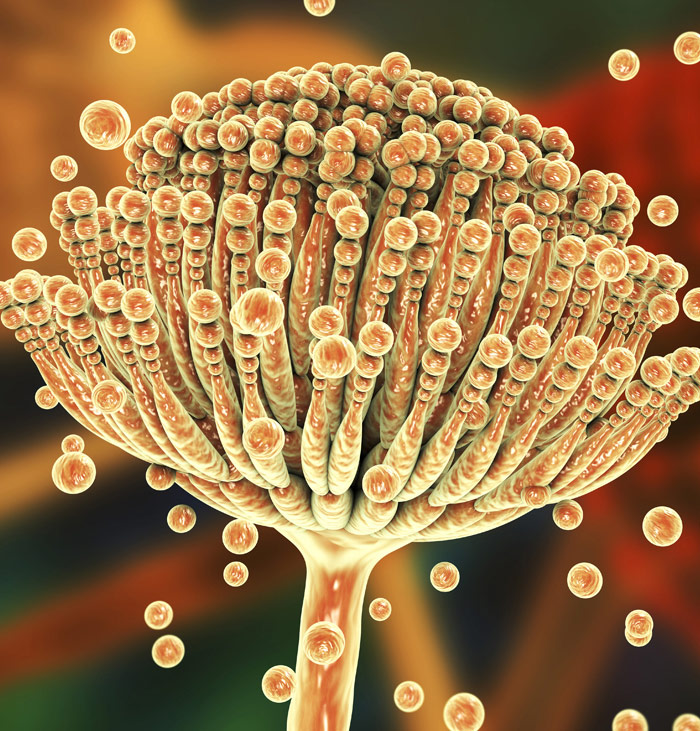 Mold illness is a common co-condition in people with Lyme disease, but the medical community has generally underappreciated its effects upon the brain and immune system. Mold affects the body in the same way as the bacterial infections that I have so far described, in that its toxins stick to the surface of the cells and are absorbed into the cells, where they cause inflammation and cellular dysfunction.
Mold illness is a common co-condition in people with Lyme disease, but the medical community has generally underappreciated its effects upon the brain and immune system. Mold affects the body in the same way as the bacterial infections that I have so far described, in that its toxins stick to the surface of the cells and are absorbed into the cells, where they cause inflammation and cellular dysfunction.
The organs and systems that are most affected by mold are the self-regulating systems of the brain and nervous system, as well as the endocrine, gastrointestinal and immune systems. Lyme and mold affect the immune system in the same way, and when one of these conditions is present in the body, the body becomes more susceptible to the other. In addition, 23 percent of all people have a genetic susceptibility to mold illness that can be determined by doing certain lab tests (more on this later).
Mold toxicity is important for people with Lyme and their doctors to understand because it can cause serious illness and compromise recovery from Lyme.
People who have been exposed to mold will be affected by the mold in a couple of different ways. Some lucky people, whenever they are exposed to a moldy environment, will have an immediate immune reaction; they will feel dizzy and spacey and quickly learn that they need to get out of the moldy environment. A second group of people will be less aware that they have been exposed to mold, and the spores that they inhale will stick to the mucus membranes in their sinuses, lungs and gut and colonize there. If this latter group has a genetic susceptibility to mold, they will have a greater chance of getting symptoms from mold exposure.
Mold and biotoxin expert Ritchie Shoemaker, MD, has established a set of criteria that doctors can use to determine their patients’ susceptibility to mold illness. One of these involves evaluating a certain HLA DRB gene pattern, the testing for which is done by Lab Corp.
Mold toxicity is important for people with Lyme and their doctors to understand because it can cause serious illness and compromise recovery from Lyme.
A healthy immune system and body that are not genetically susceptible to mold are designed to “zap” the mold upon its entry into the body so that it cannot colonize there, but in certain immune-compromised people, it is able to colonize. Once this happens, it’s very hard to dislodge. Once it’s in the body, it produces toxins, called mycotoxins, which inflame the body.
Over time, the mold takes over increasingly greater areas of mucous membrane in the body and always ends up finding its way to the bowel. The bowel is dark, moist and nutrient-rich, making it a hospitable place for mold to grow. And the more compromised and damaged the good bacterial community (microbiome) on the endothelial lining of the bowel is from Lyme and other factors, the easier it will be for the mold to expand its territory there.
Anytime the mucus membranes of the body are inflamed – whether in the nose and sinuses, gut, lung, bladder lining, skin, or the vagina – mold colonization should be suspected. The person who is unlucky enough to have high mold toxin levels will have symptoms that can be difficult to differentiate from those of Lyme disease. Like Lyme toxins, mold toxins stick to the cell membranes and then ooze into the cells, where they accumulate and add to the body’s cellular compost heap.
Mold organisms cannot live just anywhere in the body though; they are confined to the mucous membrane surfaces, and it is their waste products, or the mycotoxins, that enter the bloodstream and cause systemic symptoms. Consequently, the symptoms of mold toxicity are not as dynamic and variable as the symptoms caused by the adaptive Lyme microbes. Instead, they are more dull and flat. So if patients have seesaw symptoms; meaning, they get better for a while, then get worse, or have two or three good days, followed by three weeks of feeling terrible, then their symptoms are less likely to be mold-related.
In people who are predominantly battling mold toxicity, every day is the same; they struggle to get through the day and have low energy and a mild amount of brain fog. This pattern is fairly consistent. Mold also affects the brain and nervous system, so people with mold illness will have specific neurological symptoms. Neuropathies (damage or problems with the nerves) are common. Symptoms may include numbness or tingling in the hands and feet. Mold toxicity also causes a lot of depression, so when people have a Herxheimer reaction from mold detox (removing cellular mold with toxin binders and other therapies), depression may intensify along with other mold symptoms.
Mold symptom patterns can vary and are always worse during wet or humid seasons when mold thrives. Remember, the effects of neurotoxins are additive and cumulative. So, when brain fog or another mold symptom is added to the brain fog caused by Babesia, Bartonella, heavy metals, petrochemicals or Borrelia, the effects of each organism or toxin may compound those of the others. So, people with significant brain fog probably have more than one factor or infection causing that symptom.
Rickettsia Symptom Patterns
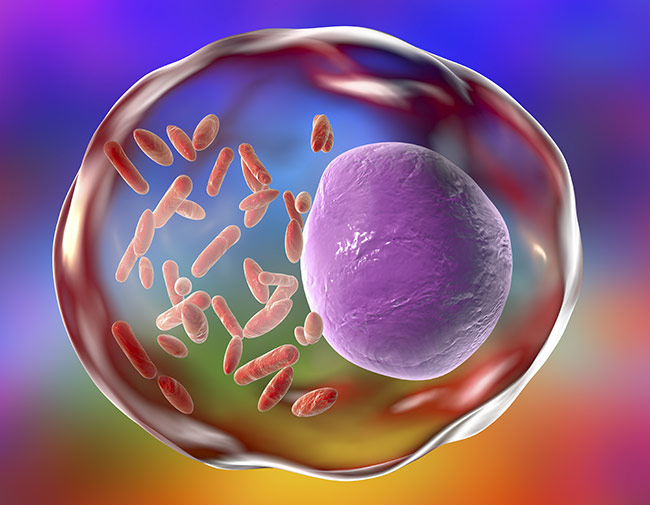 Rickettsia is another class of common Lyme disease co-infection that has been largely underestimated or unappreciated by the medical community and which I still have not understood fully myself. Ehrlichia is a type of Rickettsia infection that most Lyme doctors are familiar with, but most of us are not familiar with the hundreds of other types of Rickettsia that can cause disease. We got lucky with Ehrlichia since there are just two species of this organism that we know of, and there is a lab test that can identify both of them.
Rickettsia is another class of common Lyme disease co-infection that has been largely underestimated or unappreciated by the medical community and which I still have not understood fully myself. Ehrlichia is a type of Rickettsia infection that most Lyme doctors are familiar with, but most of us are not familiar with the hundreds of other types of Rickettsia that can cause disease. We got lucky with Ehrlichia since there are just two species of this organism that we know of, and there is a lab test that can identify both of them.
Yet, there are many other families or species of Rickettsia that are quite harmful and for which tests do not exist. The one that we know about is Rocky Mountain spotted fever (RMSF). The infectious disease community believes that RMSF is limited to specific regions of the United States. Lyme-literate doctors didn’t worry much about it initially. However, more recent evidence has shown that there are probably over 1,000 Rickettsia species, and that Rickettsia infections are more common and less regional than we had previously believed.
With Rickettsia, there can be an overall congested feeling in the body.
Rickettsial organisms are simpler than the dynamically changing Borrelia. They don’t seem to have multiple growth stages or as many forms as Borrelia; there are no cell-wall deficient forms, for instance. Therefore, they may be easier to treat, but we Lyme disease practitioners need to have a higher index of suspicion about their presence before we can learn how to adequately treat them all.
I’m still honing in on the specific symptoms that Rickettsia causes and distinguishing those from the symptoms of the other infections. I have some preliminary impressions about them, though. For instance, I’ve observed that people with Rickettsia can have a variety of skin and scalp rashes, the hallmark symptom being a rash on the palms and soles.
Rickettsia also causes stagnant, thick blood and congested circulation, which causes the blood vessels to become inflamed and results in blotchy and mottled skin. There can be an overall congested feeling in the body. Edema is common: people who have puffiness in their ankles or puffy faces and/or eyes when they awaken may have congested circulation due to Rickettsia.
Rickettsia commonly causes headaches. Cognitive problems, such as trouble focusing and concentrating, are generally not as common in people with active Rickettsia as in patients who are manifesting other Lyme co-infections such as Babesia and Bartonella. All of these infections can cause a bit of forgetfulness, but a person with Rickettsia will not think they have Alzheimer’s like a person with Babesia and won’t tend to get lost while driving home.
Rickettsia causes injected (red) blood vessels on the surface of the eye, unlike Bartonella, which causes a uniform redness. Some people have difficulty focusing their eyes and a blurriness described as “feeling like they are under water.”
However, the most prominent symptom of Rickettsia is musculoskeletal problems. People with these infections have lots of numbness, tingling and joint pain in addition to achy muscles. Therefore, when patients’ symptoms are vascular, musculoskeletal and less brain-related, then their doctors should suspect that they have a Rickettsia-like symptom presentation.
In Rickettsia, the lymphatic system is also more congested, as evidenced by areas of puffiness in the skin. This is because when the blood is “mucked up,” the lymphatic system will try to clean it. So, picture for a moment, that the lymph is like a drainage ditch on the side of the road and that the blood is the road. If you get a hard rain, the road will drain water into the drainage ditch. Similarly, the body will dump any “gunk” from the bloodstream that is not being adequately filtered by the liver into the lymph system to try to keep the blood as clean as possible.
Editor’s note: Any medical information included is based on a personal experience. For questions or concerns regarding health, please consult a doctor or medical professional.




